Entoloma sericeum (Bull.) Quél. - Silky Pinkgill
Phylum: Basidiomycota - Class: Agaricomycetes - Order: Agaricales - Family: Entolomataceae
Distribution - Taxonomic History - Etymology - Identification - Culinary Notes - Reference Sources
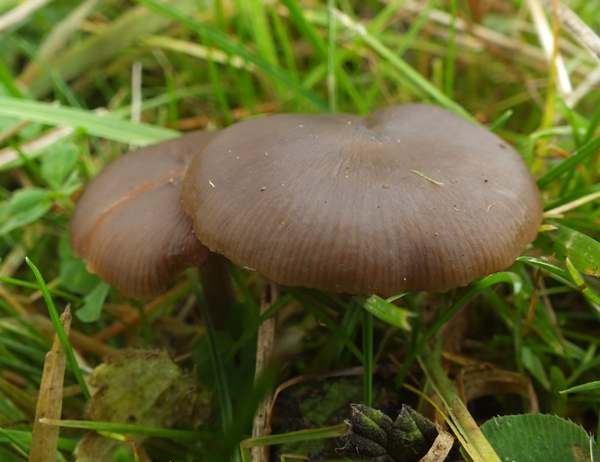
Varying from the palest shade of brown to the darkest, this grassland mushroom has one redeeming characteristic: its wonderfully silky cap is an aid to identification.
A delicate pinkgill is often seen in parkland and meadows, Entoloma sericeum is occasionally seen also on roadside verges. The caps are hygrophanous, and so the shade of brown depends very much on how wet or dry the weather has been. Some specimens are much darker than those shown here.
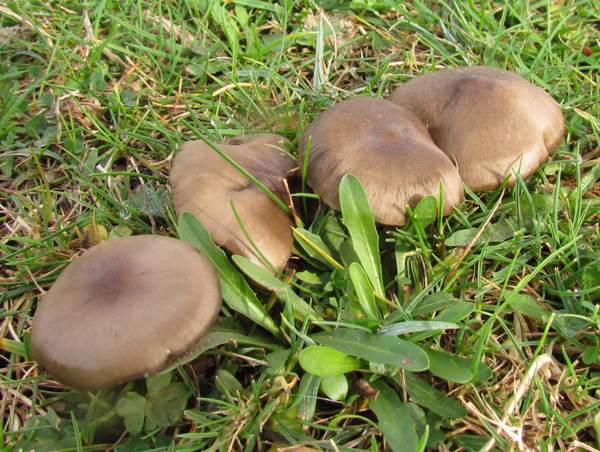
Distribution
The Silky Pinkgill is a common find in Britain and Ireland; it occurs throughout mainland Europe and in many parts of North America.
Taxonomic history
This species was described scientifically by Jean Baptiste Francois (Pierre) Bulliard in 1789, when he gave it the binomial name Agaricus sericeus. (In those early days of fungal taxonomy most of the gilled mushrooms were included initially in the genus Agaricus!) It was another Frenchman, Lucien Quelet, who in 1872 transferred this species to its present genus, at which point its scientific name became Entoloma sericeum.
Synonyns of Entoloma sericeum include Agaricus sericeus Bull., Rhodophyllus sericeus (Bull.) Quél., Nolanea sericea (Bull.) P.D. Orton, and Entoloma sericeum f. nolaniforme (Kühner & Romagn.) Noordel.
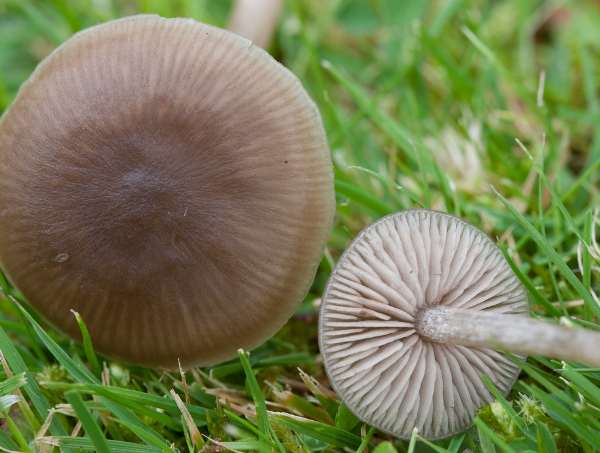
Some authorities recognise two varieties of this species. Entoloma sericeum var. cinereo-opacum Noordel has a darkish grey-brown cap and a non-striate (or minimally striate) margin. The nominate variety (the first validly described taxon) Entoloma sericeum var. sericeum (Bull.) Quél. is much more common and has a translucently striate margin when wet. Other characters of the two varieties are identical, however.
Etymology
The generic name Entoloma comes from ancient Greek words entos, meaning inner, and lóma, meaning a fringe or a hem. It is a reference to the inrolled margins of many of the mushrooms in this genus.
The specific epithet sericeum comes from Latin and means 'of silk' or 'silky- a reference to the texture of the cap cuticle'.
Identification guide
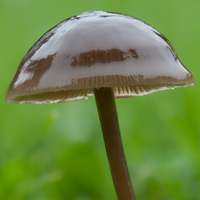 |
Cap2.5 to 5cm across; initially conical, developing an umbo as it becomes broadly convex; hygrophanous, darker brown when wet and much paler, often streaky buff when dry; surface smooth with silky radial fibrils. |
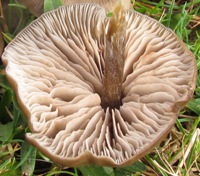 |
GillsSinuate; pale grey at first, becoming pinkish grey and eventually brown. Stem3 to 6cm long and 4 to 10mm diameter; colour as cap but paler towards base; with longitudinal silky fibrils; cylindrical; no ring. |
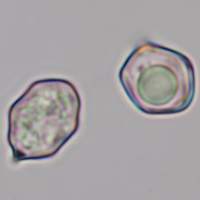 |
SporesMostly five- or six-angled (pentagonal or hexagonal) in side view; 7-10.5 x 6.5-9.5 μm. Spore printBrownish pink. |
Odour/taste |
Not distinctive. |
Habitat & Ecological role |
Saprobic, usually in small groups in unimproved grassland. |
Season |
Fruiting from summer to late autumn in Britain and Ireland. |
Similar species |
The Wood Pinkgill, Entoloma rhodopolium, is similar in cap colour; it is, of course, a woodland species whereas the Silky Pinkgill occurs nearly always in grassland. |
Culinary Notes
Reported in some field guides to be inedible, Entoloma sericeum is certainly not one for the pot. (Some Entoloma species - for example Entoloma sinuatum - are known to be deadly poisonous.)
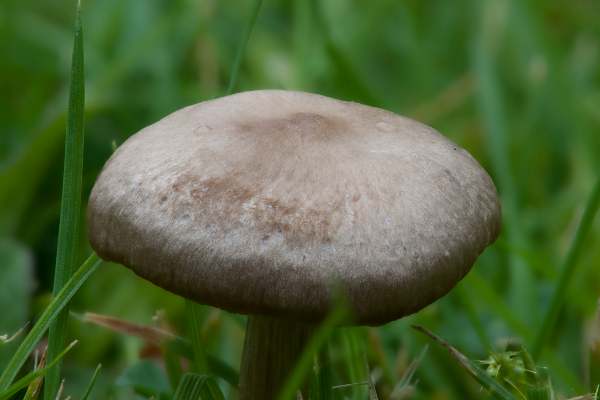
Reference Sources
Fascinated by Fungi, 2nd Edition, Pat O'Reilly 2016, reprinted by Coch-y-bonddu Books in 2022.
Knudsen H., Vesterholt J. (eds) Funga Nordica: agaricoid, boletoid and cyphelloid genera - Nordsvamp,
Noordeloos ME (1992). Fungi Europaei: Entoloma. Saronno, Italy: Giovanna Biella. p. 13.
Dictionary of the Fungi; Paul M. Kirk, Paul F. Cannon, David W. Minter and J. A. Stalpers; CABI, 2008
Taxonomic history and synonym information on these pages is drawn from many sources but in particular from the British Mycological Society's GB Checklist of Fungi.
Fascinated by Fungi. Back by popular demand, Pat O'Reilly's best-selling 450-page hardback book is available now. The latest second edition was republished with a sparkling new cover design in September 2022 by Coch-y-Bonddu Books. Full details and copies are available from the publisher's online bookshop...

